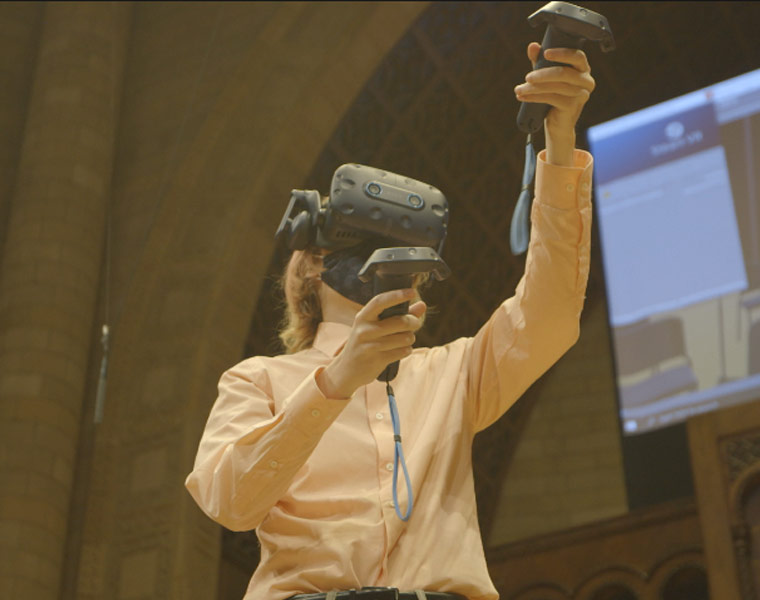After several years—and hundreds of hours—of work, a group of staff and students at Case Western Reserve University turned a possibility into a reality. A virtual reality.
When Joe Piccolo was hired as production manager at the Maltz Performing Arts Center five years ago, his goal was to find a way to allow clients to remotely view possible stage designs and layouts without having to visit the Maltz Center in person.
With the help of five CWRU mechanical engineering students and Maltz Center Stage Manager Amy Weaver, Piccolo’s idea is now fully operational—and it’s believed to be the first of its kind in northeast Ohio geared toward the performing arts industry.
“Over time, the Maltz Center has invested significant amounts of physical, mental, and fiscal effort in changing and rearranging stage setups for clients with complicated layouts,” Piccolo explained. “Instead of hand-drawing stage plots or using software that may not fully articulate the needs of an act, this virtual reality setup will allow performers, agents, touring groups, and designers to address the needs of their live shows without the necessity of being on site at the Maltz Center.”

The students who were a part of Piccolo’s computer-aided design (CAD) team for the project—Dylan Pollard, John Mays, Alan Horstman, Anaam Mostafiz and Ben Voth—used 3D modeling and virtual reality visualization software to bring the Maltz Center stage and assets to life. They rendered ‘objects’ in the software, such as music stands, chairs, and risers, so clients can build their stage setups from the comfort of their own homes.
“This project was an excellent way for me to apply the problem-solving and technical skills which I am developing as an engineering student to the world of the performing arts that I hold very dear,” said Voth, a rising senior. “CWRU is always supportive of cross-disciplinary endeavors and the application of new technology. The impressive result of this project speaks for itself. We are happy to have been able to help the Maltz Center with this endeavor and I hope that it furthers the center’s ability to put on excellent performances.”
Like Voth, Pollard, a rising sophomore, appreciated having the opportunity to make a direct impact on such a collaborative project. He noted it’s just one of the many experiences he’s had at CWRU that have shown there really are no boundaries to what you can accomplish with a little bit of engineering and computer science.
“Personally, I was able to test my own limitations in dimensional drawings and CAD work,” he said. “It is inspiring to see that what initially felt like such a small project could make a big difference for the future of the Maltz.”
As for the future of the virtual reality project, Piccolo’s goal is to continue to refine the program with the addition of house seats, textured walls, and other new objects. In a few months, he’d like to make the program available to clients on the Maltz Center website.
Hear more from the team who brought this project to life.
This article was originally published June 9, 2021.


